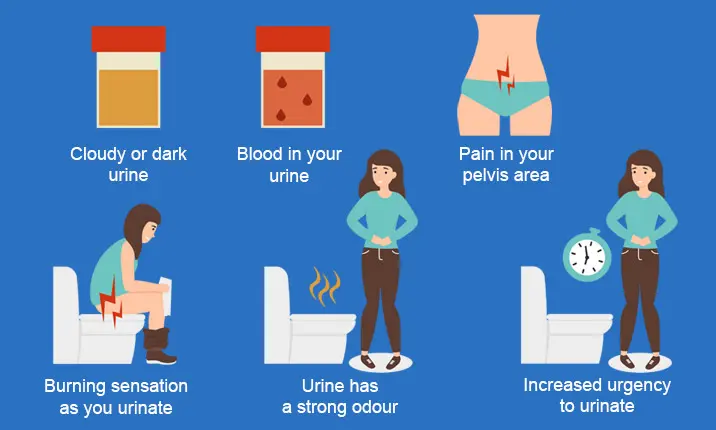The human body is capable of some incredible feats. Every second of every day, our inside organs collaborate within a variety of systems to essentially cleanse, repair, and generate. It’s the same with your urinary system, which consists of your kidneys, ureters, bladder, urethra, and renal pelvis. Nutrients are taken from food during digestion and transformed into energy. A waste product is produced during this chemical reaction, and it either ends up in the blood or the bowel. Urine is a waste product that is produced as a result of your urinary system’s continuous hard work filtering your blood.
Your urinary tract is prone to infection just like other regions of your body are. If nothing is done when this occurs, it becomes uncomfortable and serious. Everything you need to know about urinary tract infections will be covered in this article.

What is an infection of the urinary tract?
An infection in the urinary system known as a urinary tract infection (UTI) is caused by bacteria that enter the bladder through the urethra. Seeking therapy is crucial because the bacteria can occasionally, in more severe cases, go up the ureter and into your kidneys. Upper tract infections are less frequent but significantly more severe.
A bacterium is the most frequent cause of UTIs, but viruses, fungus infections, and even viral infections have also been shown to cause UTIs. It is not unexpected that UTIs are among the most prevalent infections in humans given the low number of microorganisms required to cause infection.
What causes a UTI?
Bacteria or other germs that enter your urethra and cause infection are the primary cause of a UTI, but there are other factors that raise your risk of getting one. Infections are frequently brought on by irritants. Typical risk elements include:
1. Previous history of UTIs
2. Kidney stones
3. Diabetes
4. Prolonged immobility or bed rest
5. Weakened immune systems
6. Pregnancy
7. The use of catheters over long periods of time
8. Enlarged prostate
9. Certain types of cancer
10. Age

Common Symptoms and Signs:
If you’re like most adults and have had a UTI, you’re all too familiar with the symptoms. Until the infection is treated, UTI symptoms can be quite unpleasant. The following are some of the most typical signs of a lower urinary tract infection:
- A burning sensation during urination
- Feeling a frequent or intense need to urinate, without expelling much urine
- Cloudy or dark urine
- Urine produces a strong odor
- Bloody urine
- Persistent fatigue
- Shakiness
- Pressure in your lower abdomen
Rectal pain can be a symptom in men, while pelvic pain can be a symptom in women.
The symptoms of an upper tract infection are more similar to the flu. Your kidneys have been affected by the illness, therefore you need to get help right away. These signs comprise:
- Fever
- Nausea
- Vomiting
- Chills
Urinary Tract Infections in Women:
Women’s Urinary Tract Infections Women have UTIs far more frequently. In actuality, women get UTIs eight times more frequently than men do. This is due to the fact that physiologically speaking, the urethra in women is much shorter than in men and is situated extremely close to the vagina and the anus.2 Women are instructed to wipe from front to back for optimal restroom hygiene, which is only one of several reasons for this. Bacteria can easily spread because the urethra and anus are so near together. If bacteria do get into the urethra, they swiftly make their way to the bladder and cause UTI symptoms to appear. Since UTIs often recur, it’s crucial to maintain excellent cleanliness, think about making some lifestyle changes, and get treatment as soon as you notice any signs or symptoms.
Women are more likely than males to have a UTI after having sex, it should be mentioned. Although UTIs are not in any way seen as a sexually transmitted disease, the act of having sex physically transports bacteria. Because the urethra is situated adjacent to the vagina, bacteria from the penis and vagina can easily be transferred during intercourse.
After intercourse, use the restroom right away to help your body get rid of bacteria that may have made its way into your urethra and lower your risk of getting an infection.
The use of non-lubricated condoms, diaphragms, or spermicidal lube are a few more factors that raise the risk of UTIs in women. When a woman enters menopause, the drop in estrogen alters the pH of her vagina, which alters the bacteria and raises the risk of UTI.
Urinary Tract Infections Diagnosis:
Contact your physician if you experience any UTI symptoms or indications. A urine test is the only way to determine if you have a UTI. Your doctor can perform a urine culture with the use of a urine test to determine whether microorganisms are present. This culture is crucial for determining the root of the problem and developing the best course of action. In other words, a urine test enables the greatest and quickest recuperation.
You must collect urine from the center of your urinary stream to ensure that it is not contaminated during the testing process. This implies that you will begin using the loo and only begin collecting pee after flushing some of it. This is referred to as a “clean catch” and helps decrease the likelihood of bacteria from your skin entering the sample.
Treatment Options for Chronic Urinary Tract Infections:
Unfortunately, some people get UTIs frequently. This not only gets annoying, but the regular usage of antibiotics is not ideal. Talk to your doctor about arranging more testing to identify the underlying cause if you experience repeated UTIs. Your doctor may order the following tests:
Using ultrasound, your doctor can create an image of the organs in your urinary tract to check for obstructions or other abnormalities.
1. Intravenous Pyelogram (IVP): During this test, a dye is injected into your body and allowed to go through your urinary system. Your urinary tract system is closely examined after an X-ray is obtained once the problem has been localized.
2. Cystoscopy: This procedure involves inserting a tiny camera into your urethra and into your bladder. This enables a section of the bladder to be taken and biopsied to check for issues, giving your doctor a more realistic perspective.
3. An IVP and a computerized tomography (CT) scan are comparable. Your doctor can more fully evaluate your urinary tract system thanks to the rich images produced by a CT scan.
How to Prevent Infections of the Urinary Tract?
There are preventative steps you may take whether you have recurring UTIs or simply wish to avoid the nuisance of taking antibiotics. Keep yourself hydrated as it’s one of the best strategies to prevent getting a UTI. By consuming enough water throughout the day, your urethra can clean itself out consistently, displacing and eliminating bacteria as it goes. Don’t hold it if you really need to use the loo. Too much urine retention adds to the growth of a UTI. Other precautionary steps comprise:
- Removing all of your urine from your bladder when necessary
- Front-to-back cleaning
- Choosing showers over baths
- Cleaning your genitals before sexual contact Keeping the area dry and avoiding wearing clothes that are too tight.
- Using the loo right away after having sex
Women need to be sure their birth control isn’t causing any bodily discomfort. It has been demonstrated in several research that vaginal probiotics and cranberry supplements lower the chance of getting a UTI. Women who are postmenopausal and have recurrent UTIs should discuss taking topical estrogen with their doctor.
Untreated Urinary Tract Infections Are Dangerous:
Untreated UTIs are more likely to progress to an upper tract infection, as we previously mentioned. If this takes place, the illness will worsen and spread faster. Upper UTIs are more challenging to treat and can be dangerous if left untreated. Your body enters the potentially fatal state of sepsis when the infection gets into your blood. As soon as you have any signs or symptoms, it’s crucial to call your doctor and get a urine culture. When treated promptly, UTIs are safe and simple to treat.







